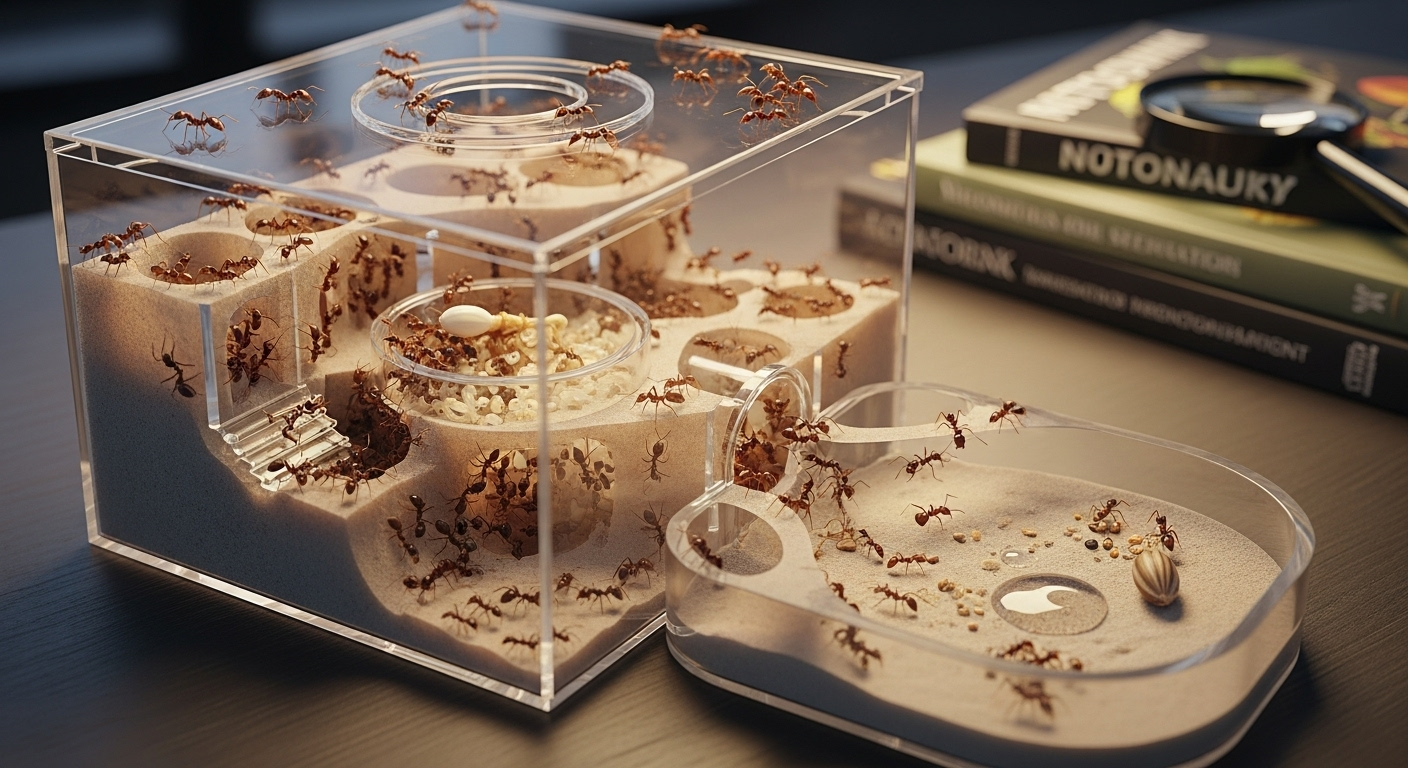The Remarkable World of Ant Farms: A Fascinating Past and Present Perspective
Ant farms, once a beloved childhood pastime, have evolved into a fascinating hobby for adults and children alike, opening a window into the world of these industrious insects. This article delves into the historical context of ant farms, their modern-day developments, and the impact they have on our understanding of these tiny creatures.

The Historical Roots of Ant Farms
The origin of ant farms dates back to 1900 when French scientist Charles Janet designed and patented the first formicarium, a device to study ant colonies. However, it was not until 1956 that Milton Levine revolutionized the concept, creating a slim, transparent ant farm for the mass market. This innovation turned ant farms into a popular educational toy, providing children a captivating look into the industrious life of ants.
Modern-Day Ant Farms: A New Breed
Modern ant farms have evolved significantly from their humble beginnings. Today, they are not just toys, but intricate ecosystems that mimic the ants’ natural habitats. They come in various forms, from gel-based farms that allow ants to tunnel through a nutrient-rich medium to advanced models with multiple chambers for different ant activities. These modern designs, often priced between $20 and $100, have fueled a burgeoning market for ant farm enthusiasts.
The Impact of Ant Farms on Our Understanding of Ants
Ant farms have not only entertained us but also broadened our understanding of ant behavior and social structure. They have demonstrated how ants communicate, cooperate, and navigate complex tunnel systems, offering valuable insights into their remarkable problem-solving abilities. Recent research has even utilized ant farms to study how ant colonies react to environmental changes, contributing to our understanding of climate change impacts on biodiversity.
The Future of Ant Farms: From Entertainment to Education
The future of ant farms lies in their potential as educational tools. Schools worldwide are beginning to incorporate ant farms into their curriculum, using them to teach students about ecology, biology, and the importance of teamwork. Some ant farm manufacturers are also developing interactive apps that allow users to track their ant colony’s progress, turning ant farming into a blend of entertainment and education.
Ant Farming: A Hobby with a Purpose
Ant farms have come a long way from their inception as a simple children’s toy. They have grown into a hobby that not only entertains but also educates, providing a fascinating glimpse into the complex world of ants. In the process, they have sparked a renewed interest in these small but mighty creatures, reminding us of the wonders that lie in the minutiae of nature.
In conclusion, ant farms have not only stood the test of time but have evolved and adapted to cater to a modern audience. They have transformed from a nostalgic childhood toy to a fascinating hobby and educational tool, offering a unique insight into the world of these industrious insects. As we continue to learn and grow with these tiny creatures, we can only anticipate what future developments lie ahead in the remarkable world of ant farming.





